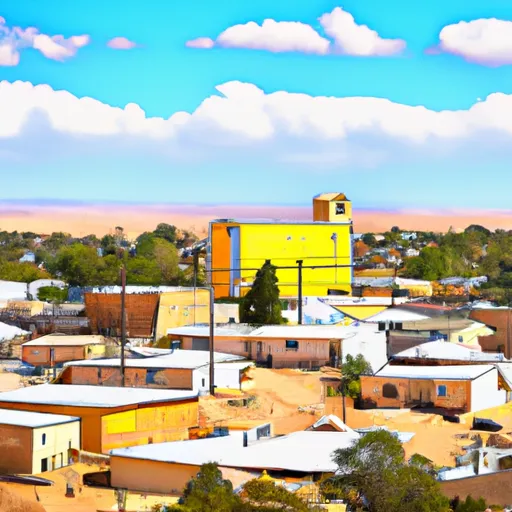-
 Snoflo Premium
Snoflo Premium
Get unlimited access to all our content
With no Ad interruptions! - Start Your Free Trial Login with existing account
Sasabe
Eden Index
Climate
9.1
•
Recreation
2.5
•
Community
•
Safeguard
4.5/10

Sasabe is a small town located in Pima County, Arizona, near the Mexican border. The climate in Sasabe is characterized as a hot desert climate, with extremely hot summers and mild winters. Summers often see temperatures exceeding 100°F (38°C), while winters are generally pleasant with temperatures ranging between 40-70°F (4-21°C). The region receives minimal rainfall, typically around 9 inches (23 cm) per year.
Hydrologically, the town is situated near the Santa Cruz River and its tributaries. However, due to the arid climate, water flow is limited and the river is often dry for long stretches. The groundwater in this area is accessed through wells.
Sasabe offers several outdoor recreation opportunities due to its proximity to the beautiful Sonoran Desert. Visitors can explore the nearby Buenos Aires National Wildlife Refuge, which provides a habitat for numerous species of birds, mammals, and reptiles. Hiking, bird watching, and wildlife photography are popular activities in the refuge. Additionally, the desert surroundings offer opportunities for camping, off-roading, and stargazing, allowing visitors to immerse themselves in the stunning natural beauty of the region.
What is the Eden Index?
The Snoflo Eden Index serves as a comprehensive rating system for regions, evaluating their desirability through a holistic assessment of climate health, outdoor recreation opportunities, and natural disaster risk, acknowledging the profound impact of these factors on livability and well-being.
Climate Health Indicator (CHI): 9.1
Sasabe receives approximately
407mm of rain per year,
with humidity levels near 47%
and air temperatures averaging around
18°C.
Sasabe has a plant hardyness factor of
8, meaning
plants and agriculture in this region tend to thrive here all year round.
By considering the ideal temperature range, reliable water supplies, clean air, and stable seasonal rain or snowpacks, the Climate Health Indicator (CHI) underscores the significance of a healthy climate as the foundation for quality living.
A healthy climate is paramount for ensuring a high quality of life and livability in a region, fostering both physical well-being and environmental harmony. This can be characterized by ideal temperatures, reliable access to water supplies, clean air, and consistent seasonal rain or snowpacks.
Weather Forecast
Streamflow Conditions
Santa Cruz
Area Rivers
Santa Cruz
Snowpack Depths
Santa Cruz
Reservoir Storage Capacity
Santa Cruz
Groundwater Levels
Recreational Opportunity Index (ROI): 2.5
The Recreational Opportunity Index (ROI) recognizes the value of outdoor recreational options, such as parks, hiking trails, camping sites, and fishing spots, while acknowledging that climate plays a pivotal role in ensuring the comfort and consistency of these experiences.
Access to outdoor recreational opportunities, encompassing activities such as parks, hiking, camping, and fishing, is crucial for overall well-being, and the climate plays a pivotal role in enabling and enhancing these experiences, ensuring that individuals can engage in nature-based activities comfortably and consistently.
Camping Areas
| Campground | Campsites | Reservations | Toilets | Showers | Elevation |
|---|---|---|---|---|---|
| Buenos Aires NWR Dispersed | None | 3,159 ft |
Nearby Ski Areas
Catastrophe Safeguard Index (CSI):
The Catastrophe Safeguard Index (CSI) recognizes that natural disaster risk, encompassing floods, fires, hurricanes, and tornadoes, can drastically affect safety and the overall appeal of an area.
The level of natural disaster risk in a region significantly affects safety and the overall livability, with climate change amplifying these risks by potentially increasing the frequency and intensity of events like floods, fires, hurricanes, and tornadoes, thereby posing substantial challenges to community resilience and well-being.
Community Resilience Indicator (CRI):
The Community Resilience Indicator (CRI) recognizes that education, healthcare, and socioeconomics are crucial to the well-being of a region. The CRI acknowledges the profound impact of these elements on residents' overall quality of life. By evaluating educational resources, healthcare accessibility, and economic inclusivity, the index captures the essential aspects that contribute to a thriving community, fostering resident satisfaction, equity, and social cohesion.

